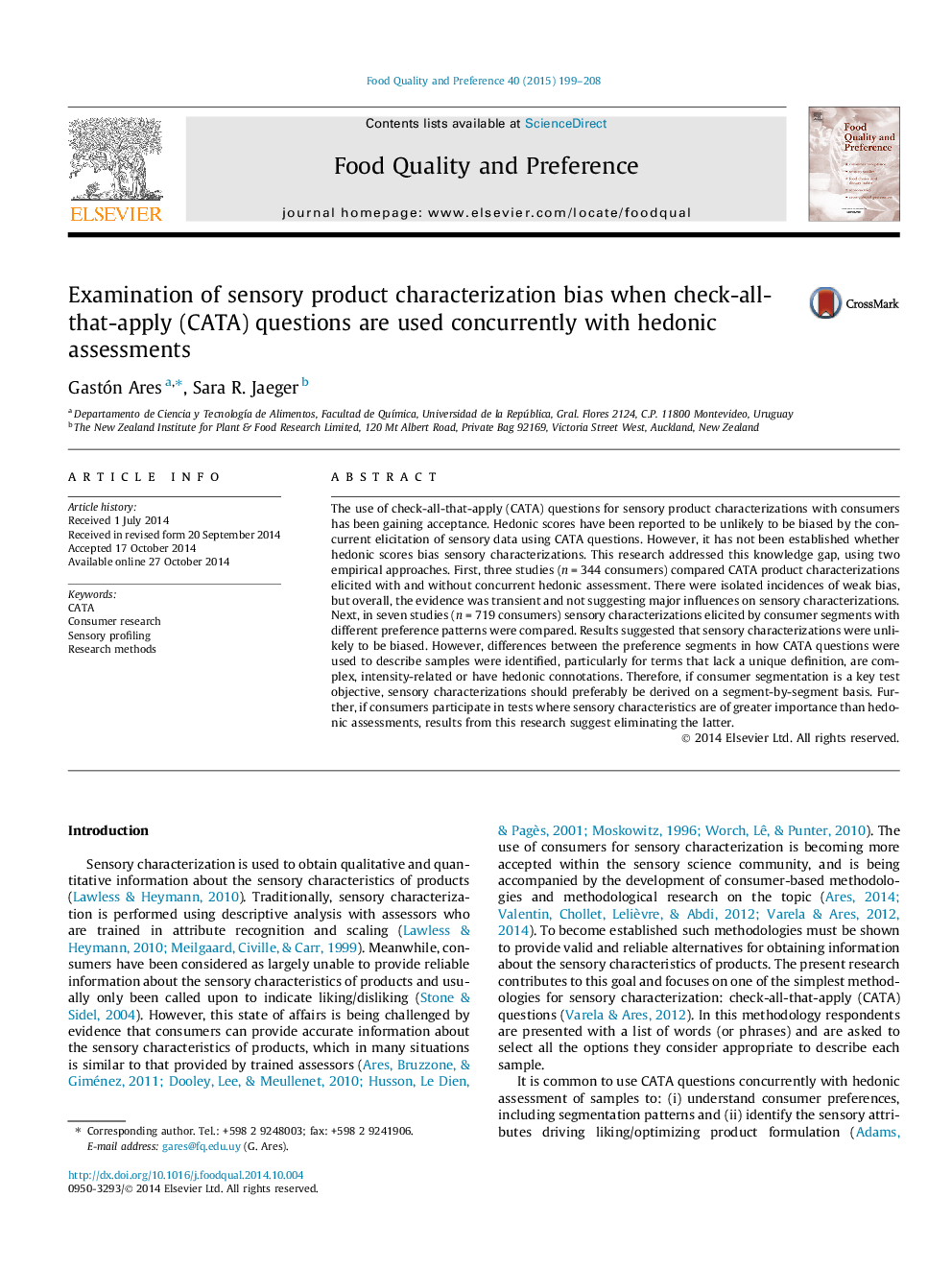| Article ID | Journal | Published Year | Pages | File Type |
|---|---|---|---|---|
| 4317079 | Food Quality and Preference | 2015 | 10 Pages |
•Hedonic bias of sensory characterizations obtained with CATA questions was examined.•Characterizations elicited with and without concurrent hedonic assessment were similar.•Consumers with different preference patterns provided similar sample configurations.•Differences in how CATA questions were used to describe samples were identified.
The use of check-all-that-apply (CATA) questions for sensory product characterizations with consumers has been gaining acceptance. Hedonic scores have been reported to be unlikely to be biased by the concurrent elicitation of sensory data using CATA questions. However, it has not been established whether hedonic scores bias sensory characterizations. This research addressed this knowledge gap, using two empirical approaches. First, three studies (n = 344 consumers) compared CATA product characterizations elicited with and without concurrent hedonic assessment. There were isolated incidences of weak bias, but overall, the evidence was transient and not suggesting major influences on sensory characterizations. Next, in seven studies (n = 719 consumers) sensory characterizations elicited by consumer segments with different preference patterns were compared. Results suggested that sensory characterizations were unlikely to be biased. However, differences between the preference segments in how CATA questions were used to describe samples were identified, particularly for terms that lack a unique definition, are complex, intensity-related or have hedonic connotations. Therefore, if consumer segmentation is a key test objective, sensory characterizations should preferably be derived on a segment-by-segment basis. Further, if consumers participate in tests where sensory characteristics are of greater importance than hedonic assessments, results from this research suggest eliminating the latter.
